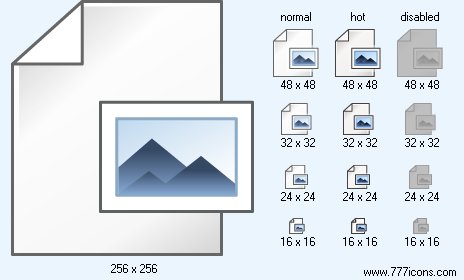


|
| ||||||||
|
|
Graphic File Icon |
|
Image sizes: 256x256, 128x128, 48x48, 32x32, 24x24, 16x16
File formats: BMP, GIF, PNG, ICO
Tags: cute moving icons, icon natter, emo gothic icons, axialis icon workshop corporate, icons turns black
Naturally, authors of programming languages reflected on it also. Therefore in all existing languages there are the types of variables which are responsible for storageLarge scale arrays of the data. In language of Pascal they and are named: "arrays".
As the array we will name the arranged data series of one type, united under one name. By the way, under this definition approaches
Set of objects from the real world: the dictionary (sequence of words), a cartoon film (sequence of pictures) etc. Most easier to imagine the array in the form of the table where each value is in the own
To cell. Position of a cell in the table should be defined by a set of co-ordinates (indexes) unambiguously. Simple the linear table in which for pinpointing on a data item there is enough knowledge only one number (index) is most. We while will be engaged only in linear arrays as more difficult structures are under construction on their basis.
Type declaration of the linear array looks so:
Type <a type Name> =Array <the Range of indexes> Of <Type of units>;
As indexes variables of any serial types can appear.
At range instructions the initial index should not exceed the finite. The type of array cells can be any (standard or described earlier).
To describe a variable-file it is possible and at once (without preliminary type declaration) in section of the description of variables:
Var <Variable-file>: Array <the Range of indexes> Of <Type
Units>;
Examples of the description of arrays:
Var S, BB: Array 1. 40 Of Real;
N: Array ' A '. ' Z ' Of Integer;
R: Array -20. 20 Of Word; T: Array 1. 40 Of Real;
Copyright © 2006-2022 Aha-Soft. All rights reserved.
|

